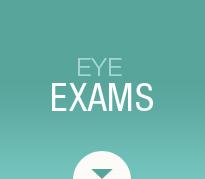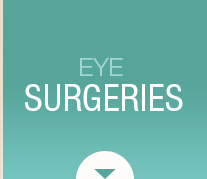Eye Topic of the Month
July is UV Safety Month
What's Your Risk of Eye Damage From UV Light?
Everyone's eyes are susceptible to damage from ultraviolet (UV) light, regardless of age or skin pigmentation. But some people are at higher risk.
Here are some of the most common situations that increase your sensitivity to UV light.
Download the Facebook or X version of this image to share with your community.
Cataract Surgery and UV Damage
People who had cataract surgery years ago may have an elevated risk of UV damage. During this surgery, the eye's lens is removed, leaving the eye more vulnerable to UV light. The natural lens is usually replaced by an intraocular lens (IOL). Older intraocular lenses absorb much less UV light than ordinary glass or plastic eyeglass lenses. Manufacturers of IOLs now make most of their products UV-absorbent.
During cataract surgery, an IOL (shown above) replaces the eye's natural lens.
If you have had cataract surgery and your IOL is not the newer UV-absorbent type, it's especially important for you to wear 100 percent UV-blocking sunglasses and a hat whenever you are outdoors.
Avoid Sunlight After Receiving Photodynamic Therapy
If you have an eye condition such as age-related macular degeneration (AMD) and recently received photodynamic therapy, your ophthalmologist may advise you to avoid sun exposure for a few days after treatment. During this time, be sure to wear dark sunglasses and protective clothing whenever you go outdoors. Ask your ophthalmologist how long you should continue taking these precautions.
Photosensitizing Drugs Increase Sensitivity to Sunlight
Photosensitizing drugs — drugs that make your skin more sensitive to light — can make your eyes more sensitive to light as well. You should discuss precautions with your ophthalmologist if you are taking photosensitizing drugs and wear UV-absorbent sunglasses and a hat whenever you go outside for as long as you take them. Some of the drugs that may increase your risk of UV sensitivity include:
- Antibiotics containing fluoroquinolones and tetracycline (including doxycycline and Cipro)
- Certain birth control and estrogen pills (including Lovral and premarin)
- Phenothiazine (an anti-malarial)
- Psoralens (used in treating psoriasis)
Anti-inflammatory pain relievers like ibuprofen and naproxen sodium have also been shown to cause photosensitivity, though the reaction is rare.
Light-Colored Eyes Are at Higher Risk of UV Damage
Have blue or green eyes? Some studies show that UV exposure and light irises may increase the risk of rare eye cancers, such as melanoma of the iris or uveal melanoma.
However, not everyone knows about the connection. According to an eye sun safety Harris Poll by the American Academy of Ophthalmology, 54% of people in the United States reported having light colored eyes (blue, green, or hazel), but less than a third of them knew that light-colored eyes are associated with greater risk of certain eye diseases.
An Eye Exam Could Help
If you are worried about UV damage or have additional questions about your eye health, see an ophthalmologist for a comprehensive eye exam.
For individuals age 18 or older who are concerned about the cost of an exam, you may be eligible for a no out-of-pocket cost eye exam through the American Academy of Ophthalmology’s EyeCare America® program. This public service program matches volunteer ophthalmologists with eligible patients in need of eye care nationwide. To see if you or a loved one qualifies, visit EyeCare America.





